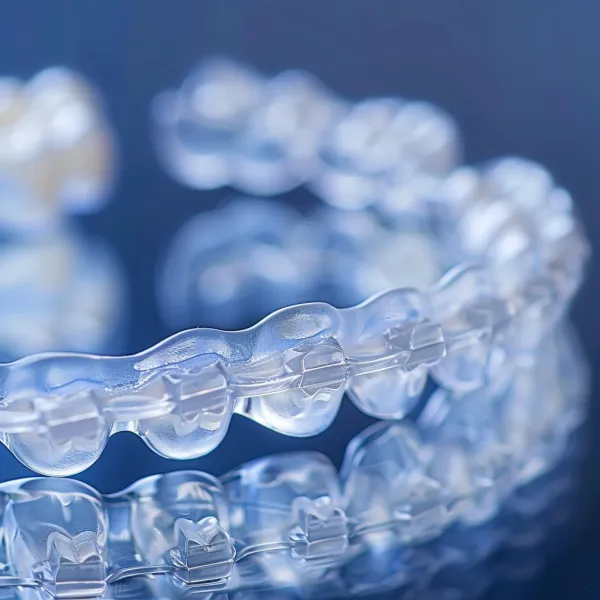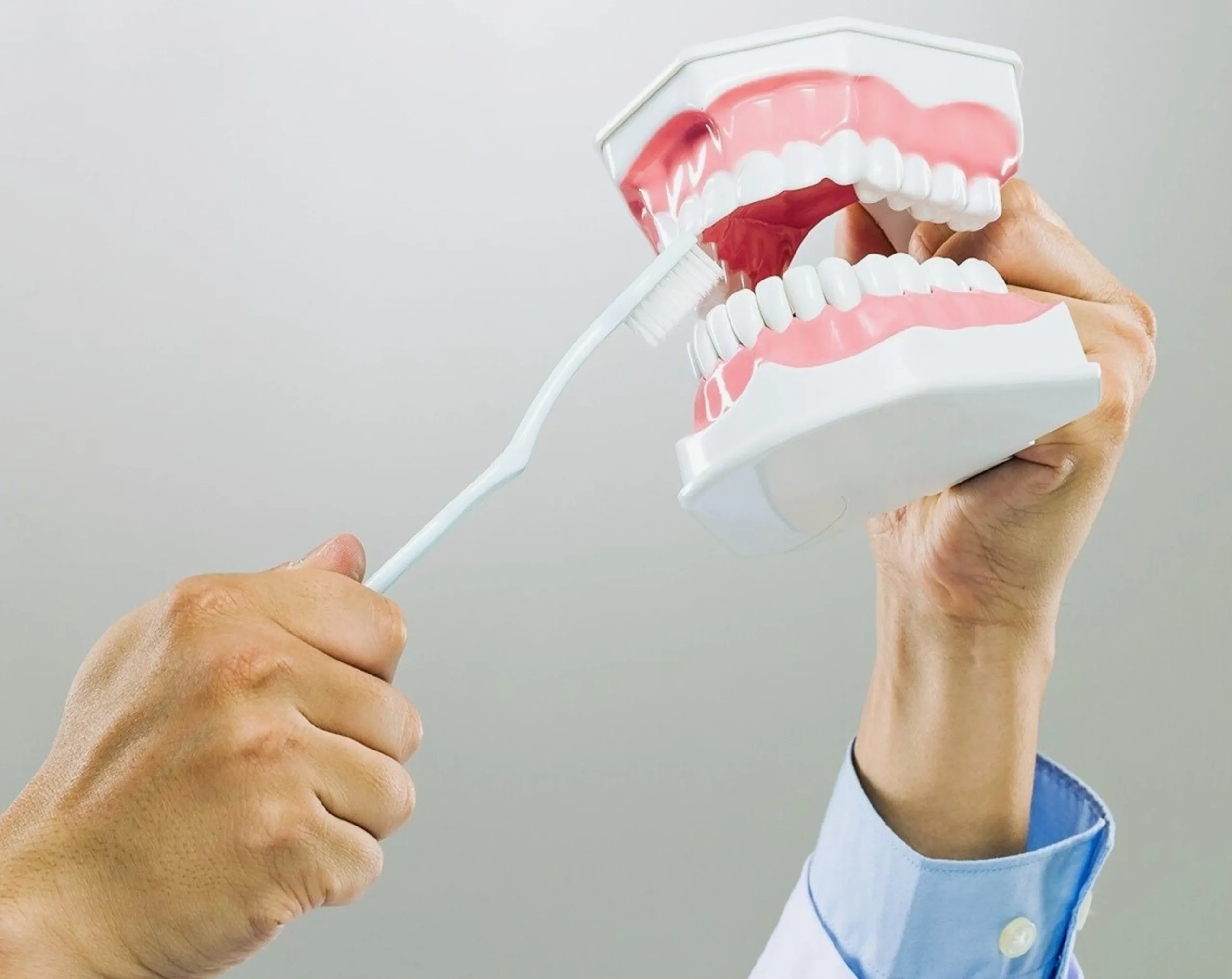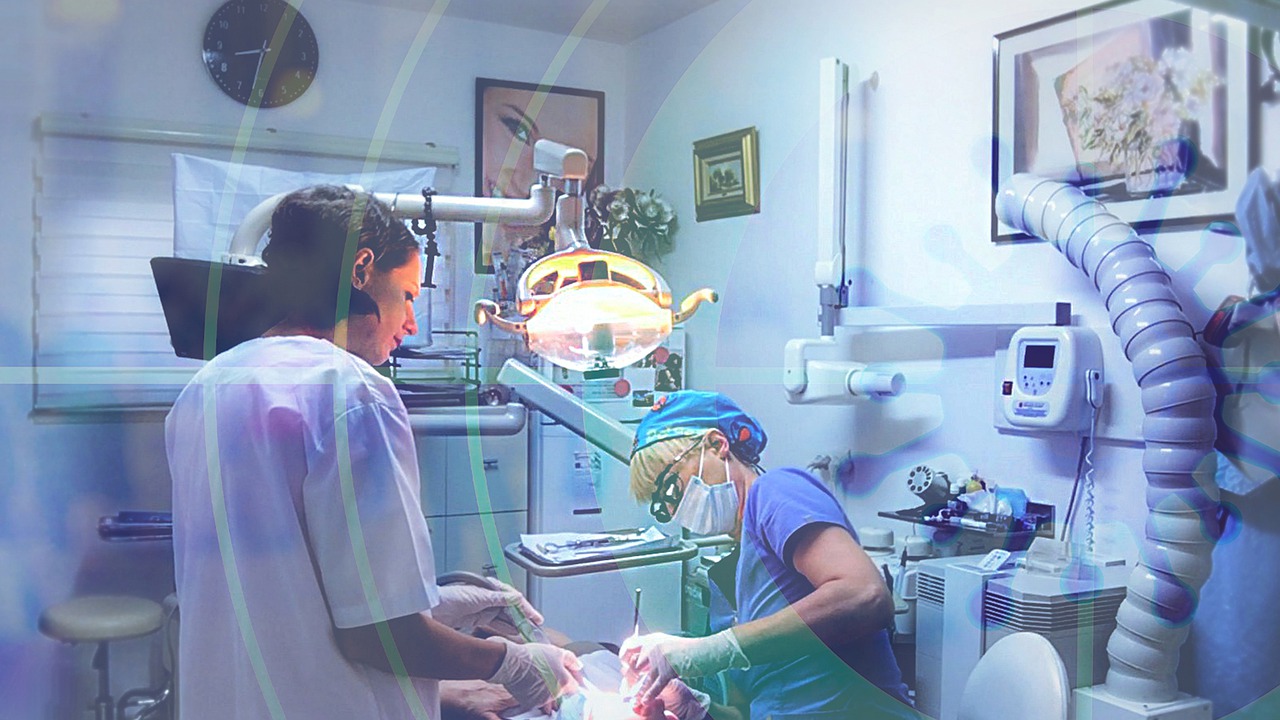Here are some tips for managing pain and discomfort when using Invisalign aligners for straightening teeth:
- Expect some discomfort during the first week of treatment as your teeth are adjusting to the aligners.
- Only a small percentage of patients feel pain, and it’s usually mild and temporary.
- If you experience severe pain or discomfort, see an orthodontist.
- To manage pain and discomfort, you can try using dental wax, eating soft foods, applying a cold compress, wearing aligners for at least 22 hours per day, putting on fresh aligners before sleeping, using over-the-counter pain relievers (with caution and doctor’s advice), or seeking professional care.
- Keep in mind that the aligners are repositioning your teeth, so some discomfort is normal, but it should not interfere with your everyday activities.
Is Invisalign painful?

When Clear Dental Aligners hit the market, many patients have abandoned conventional braces in favor of these discrete aligners. One of the well-known companies dominating the market for invisible aligners is Invisalign, which is primarily recommended by dentists for straightening teeth.
While Invisalign has been shown to be more comfortable than conventional braces, there is a chance of some little discomfort during the first week of treatment.
Why Do My Invisalign Painful?
Only a small percentage of patients feel the transient pain that comes with Invisalign aligners. It normally takes one week for someone to become acclimated to their Invisalign aligners, and only during this time do most individuals suffer pain. Your teeth are moving to a new location for the first time when this primarily occurs.
How Much Pain Does Invisalign Cause?
In the first week of using Invisalign aligners, 54% of patients reported transitory mild pain and discomfort, compared to 35% who reported no pain at all, according to a new study.
Since the procedure necessitates the use of fresh Invisalign trays every two weeks, you can feel some little discomfort during the first few days of each cycle. These symptoms might lessen as you grow acclimated to wearing your Invisalign, though.
1. One tooth is hurting.
One tooth may experience pain after receiving traditional braces or clear Invisalign aligners. As a result of tooth movement brought on by Invisalign’s propensity to shift various teeth in varying degrees with each aligner tray, this occurs.
2. When is pain a problem?
When using Invisalign aligners, people frequently experience pain in their teeth, jaw, and tongue. While some discomfort is normal, it might be concerning when it becomes severe and starts to interfere with your everyday activities.
It is advised that you see an orthodontist if you have:
• swelling of the face
• bleeding gums and teeth
• pain when eating
• sensitivity to the cold and heat
How may Invisalign Pain be managed?

Even though the pain from Invisalign is minor and very temporary, some people may find it difficult to put up with it every day.
It is therefore advised that you consider the options available to you for coping with Invisalign pain.
TO VISIT BYTE ALIGNERS SITE- CLICKHERE
1. Try dental wax
You can reduce the discomfort brought on by your aligners by using dental wax. To lessen the friction that is causing gum soreness in your mouth, put wax on top of your aligners.
2. Add softer foods to your diet.
Within the first week of receiving your Invisalign aligners, it is advised to stay away from hard foods to prevent pain. You can prepare a smoothie out of all your fruits and veggies or consume minced meat or chicken. Avoid eating things that are difficult to chew and hurt your teeth and gums.
3. Cold compress
A wet washcloth or an icepack are examples of a cold compress, which is a frozen or cooled material. It is renowned for reducing pain and swelling, and it also works to relieve tooth pain. Hence, if you wish to temporarily relieve the pain, we advise using a cold compress.
4. Avoid removing your aligners too frequently
.webp)
Your Invisalign aligners should be worn for at least 22 hours per day. As a result, you should only take out your aligners to eat, drink, or brush your teeth. According to a poll, wearing their aligners for longer periods of time may have helped many patients experience less pain.
5. Before sleeping, put on fresh aligners
As the name implies, changing to a new set of Invisalign aligners just before bed can help you feel less pain for at least half the night. By doing this, you’ll be able to sleep well at night and have pain-free mornings.
6. OTC pain-killers
Using over-the-counter pain relievers can help you cope with the intense pain you experience in the initial days after receiving an Invisalign aligner. Aspirin, Advil, and Tylenol are a few of the often used pain relievers. It is advised that you speak with a doctor before using these medications, especially if you have other health issues.
7. Get care from a reputable orthodontist
Seeing a reputable orthodontist may be your only option if none of the alternatives above prove successful for you and you are unable to stop experiencing pain from your Invisalign aligners. You can get treated and get rid of the discomfort by speaking with a dentist and explaining the issue.
TO VISIT BYTE ALIGNERS SITE- CLICKHERE
How To Control Invisalign Discomfort and Pain?
Although Invisalign is a great alternative for straightening teeth, it occasionally results in inflammation, pain, or discomfort. When compared to traditional braces, the discomfort is typically less intense, though it might vary from person to person in terms of intensity. Most patients who use Invisalign perceive the pain as pressure or discomfort when their teeth realign.
When wearing Invisalign for the first time and after switching to a new aligner tray, patients most frequently suffer pain with their aligners. Your teeth are changing positions for the first time, which is why it could hurt. When your mouth isn’t used to this unusual position, it can be unpleasant. Your teeth are slightly moved into a new position each time you put in a new aligner. For a few days following the procedure, your teeth can be sore. While some people only feel pain for a few days, others could feel it the entire time they are receiving therapy.
Keep in mind that the aligners are repositioning your teeth. It may only be your teeth changing and moving into their new place if you experience a slight degree of pain or discomfort. It can mean they are functioning as intended. It doesn’t follow that you have no options for easing Invisalign pain.
There are various things you may take to help relieve pain if it is brought on by your Invisalign treatment.
1. Employ A Bag Of Peas, A Cold Compress, Or An Icepack To Treat Invisalign Pain
The painful spot will become numb and the swelling will go down if you press anything cool against your skin. In order to lessen some of the pain, you should reduce swelling.
Employ the icepack, cold compress, or bag of frozen vegetables for a maximum of ten minutes at a time. Avoid pressing it against your skin directly. The ice should be covered with a cloth or towel instead. This can be done multiple times throughout day long.
2. Ingest cold water
Using a cold compress is comparable to how this approach works. To assist gently numb the aching area, sip cool water. You don’t need to take out your aligners to sip water because you can do so while wearing them. Avoid consuming sugary beverages like soda or juice, which can damage your teeth and create cavities.
3. Suck On Ice Cubes
Sucking on ice cubes will also help to numb the area affected by Invisalign pain. You don’t need to take out your aligners when you do this. Be careful to suck on the ice cubes, and do not chew them. Chewing on hard ice may cause you unnecessary pain because teeth can become sensitive to biting into hard foods while wearing Invisalign.
4. Avoid Eating Nuts and Other Hard Foods
Hard foods like crackers and nuts should be avoided when your teeth are hurting since they can be uncomfortable to chew. Adhere to soft things like bread, hummus, tuna, or hard-boiled eggs that won’t hurt when you bite into them.
5. Use nonprescription painkillers
Ibuprofen, aspirin, acetaminophen, or other over-the-counter medicines can always be used to treat Invisalign pain. Observe the medication’s usage instructions and suggested dosage.
If you frequently encounter Invisalign pain after switching out your aligners, you can take an over-the-counter pain reliever before doing so to assist avoid any pain at all.
6. For Invisalign pain, use Orajel
Orajel is a topical analgesic that you can apply directly to your gums or teeth if they are hurting or painful. The area will become momentarily numb. Be sure to remove your aligners so you may immediately saturate the sore area with Orajel.
7. Ensure that your Invisalign is properly seated.
Make sure your aligners are fully pushed in and snapped into position when you insert them. Your aligners may feel uncomfortable and put unneeded pressure on your teeth if they are not properly positioned against your teeth. Because it is pushing your teeth in the wrong direction, an incorrectly seated aligner may hurt.
8. Don’t remove your aligners too frequently
22 hours a day should be spent wearing Invisalign. Only take them out when you need to eat, drink, or brush your teeth. Some claim that by putting their aligners on for a little longer and taking them out less frequently, they felt less pain.
Your teeth may have altered if you unintentionally leave your aligners out for a long period of time and then put them back in, making them more snug. While your teeth reposition to the aligners, this may be the source of Invisalign pain.
9. To prevent Invisalign pain, begin wearing new aligners before bed.
When it’s time to begin new aligners, put them in the night before rather than the morning. This will allow your teeth some time while you sleep to adjust to their new position. Because you won’t be taking the aligners on and off to eat, and because you’ll be sleeping through the initial adjustment phase, it may assist with Invisalign pain.
10. Follow the schedule
Your aligner trays should be changed according to a set timetable. This is personalized for you with the goal of reducing discomfort while still straightening your teeth. Avoid attempting to speed up your Invisalign treatment by changing aligners early.
11. Use Saltwater Mouthwash To Relieve Invisalign Pain
Occasionally, mouth sores can be brought on by Invisalign if they are rubbing against your tongue or gums. If this occurs, you can treat the sores by gargling with saltwater and then spitting it out.
12. Be persistent
When using Invisalign for the first time, patients frequently feel more pain. Several patients claim that their discomfort decreases as they get acclimated to their aligners and their teeth changing. Sometimes you have to put up with things for a little while so that you can get used to the new normal. After a few months of wearing Invisalign, your pain may have totally disappeared or at least greatly decreased.
Overall, Invisalign is typically less painful than more conventional teeth-straightening procedures. Many people who wear their aligners only experience minor discomfort or pressure. There are numerous things you may take to lessen Invisalign pain if you do encounter it.
TO VISIT BYTE ALIGNERS SITE- CLICKHERE
Eat When With Invisalign?

No. While wearing Invisalign, you cannot eat anything. In fact, when wearing your Invisalign, you should only consume water. They are not designed to withstand the pressure of biting and chewing, despite the fact that they are strong enough to move crooked and misaligned teeth into the proper position. Only after taking out your aligners are you able to eat and drink.
We now go on to the part after that. During the course of your ongoing Invisalign treatment, you must be aware of some basic food guidelines.
What to Keep in Mind When Eating During Invisalign Therapy?
1. Remember to take off your aligners before eating
You can forget to take your Invisalign out before a meal. This is because you get used to them as your real teeth because they are so amazingly comfy. Don’t commit that error. It doesn’t matter if it’s a tiny nibble or a substantial dinner. For all food and beverages other than simple water, you must remove the tray from your aligners.
2. Limit your beverage intake to water only
With wearing Invisalign, drinking anything other than simple water is just as dangerous as eating. Wearing Invisalign is meant to keep your treatment under wraps. But, if your aerated or sugary beverage stains your aligners, this goal is defeated. Hence, when using Invisalign, only consume water. Remove them first, then drink the rest.
3. Comply with the steps
Every time you take out your aligners to eat or drink, there is a procedure you need to follow. After removing them, keep them secure in a special case. After that, properly brush and floss your teeth before putting them back on. If you don’t, the leftover food particles from your meal will continue to cling to your teeth and cause cavities.
4. Stick to the steps
You must follow a certain procedure each time you take out your aligners to eat or drink. Then, after removing them, store them safely in a special case. Before putting them on again, properly brush and floss. Otherwise, the leftover food from your meal will keep sticking to your teeth and cause cavities.
5. Keep your aligners clean
For the benefit of your dental hygiene, it’s essential to keep your aligners clean. Using Invisalign cleaning crystals is the ideal method for cleaning your aligners. It might also be suggested by your orthodontist as part of your Invisalign treatment. Aligners can also be cleaned using mouthwash, soft-bristled toothbrushes, and cleaning soaks.
TO VISIT BYTE ALIGNERS SITE- CLICKHERE
What Foods Should I Avoid When Using Invisalign?

After taking off your aligners, you can eat everything you want. Nevertheless, when receiving continuous Invisalign treatment, you shouldn’t consume anything. The following foods should be avoided:-
• Sweet Treats
Your teeth can’t be properly treated if they are unhealthy since sugar makes them prone to cavities. Sugary gums can potentially harm aligners by adhering to them, which will shorten the amount of time you can wear them each day.
• Strict Diets
Crusty bread pieces, pretzels, and other foods might further deteriorate your teeth’s alignment. Even the tray of the aligner might be broken by hard food items. As a result, refrain from eating anything crunchy or hard while you are receiving therapy.
TO VISIT BYTE ALIGNERS SITE- CLICKHERE
• Wine, aerated beverages, and coffee
Avoid consuming sugary and acidic beverages including soda, coffee, and alcohol. These beverages have the potential to discolor your Invisalign aligners. Moreover, tooth decay is brought on by the acid and sugar in these drinks.
• Chewy & Sticky Food
Throughout your Invisalign treatment, your orthodontist may also advise against eating sticky and chewy foods like gum. Cleaning them off the surface of your teeth is difficult. Moreover, sticky food that stays on your teeth for a long time produces plaque and bacteria.
Conclusion
While Invisalign is generally more comfortable than traditional braces, some patients may experience mild pain and discomfort during the first week or after changing to a new aligner tray. This discomfort is usually temporary and can be managed with various methods such as using dental wax, adding softer foods to your diet, using a cold compress, wearing aligners for longer periods of time, taking over-the-counter painkillers, or seeking care from a reputable orthodontist. It is important to note that severe pain or discomfort that interferes with daily activities should be addressed by a dental professional. Overall, while Invisalign may cause some discomfort, it is a highly effective and popular option for straightening teeth.





